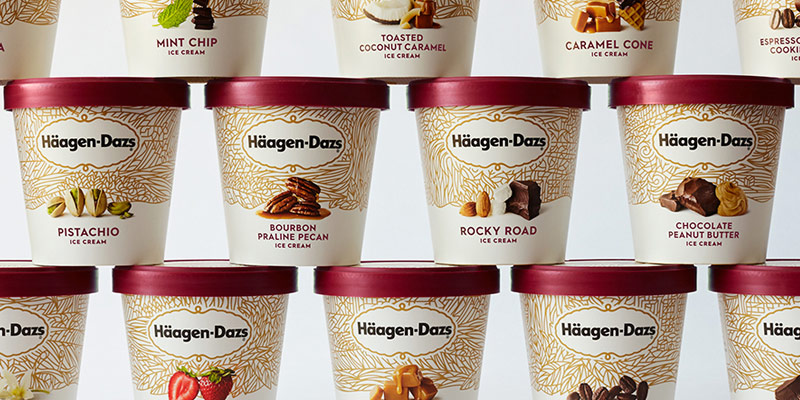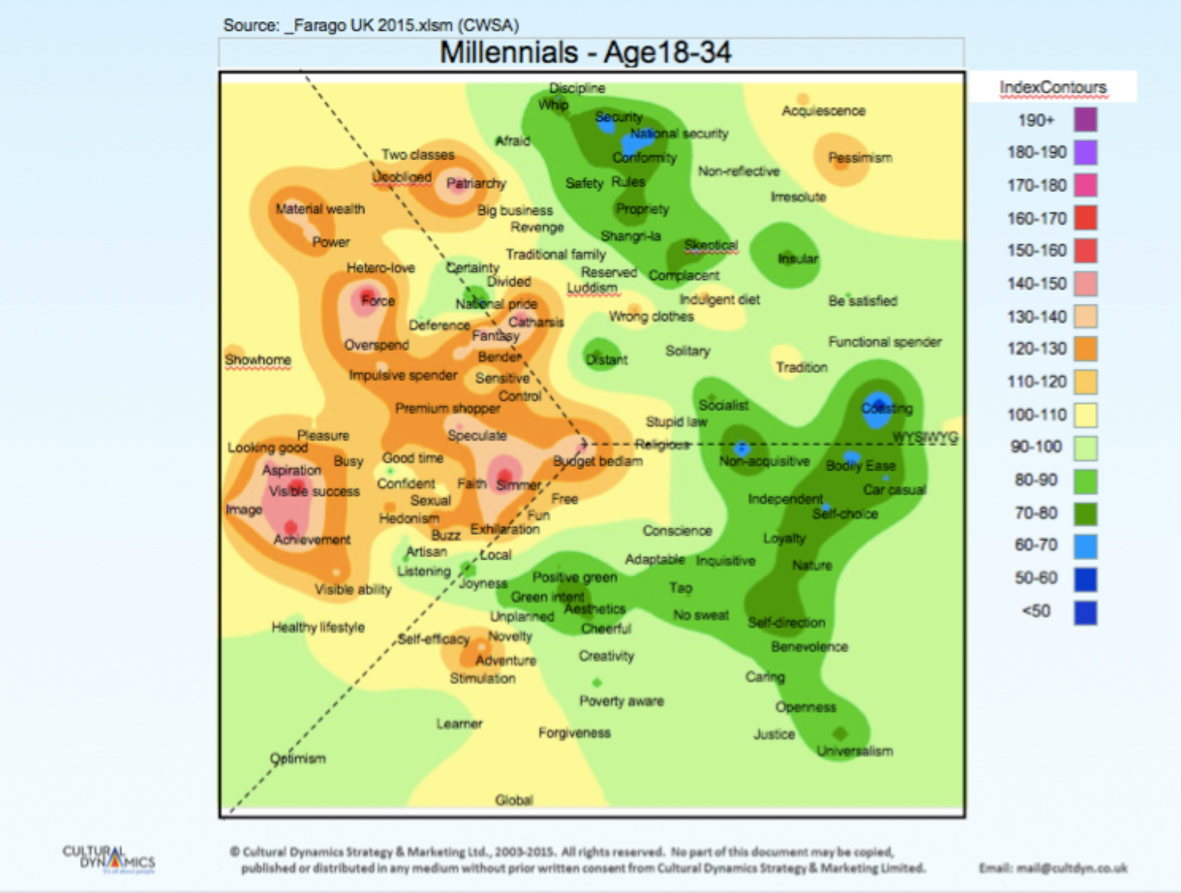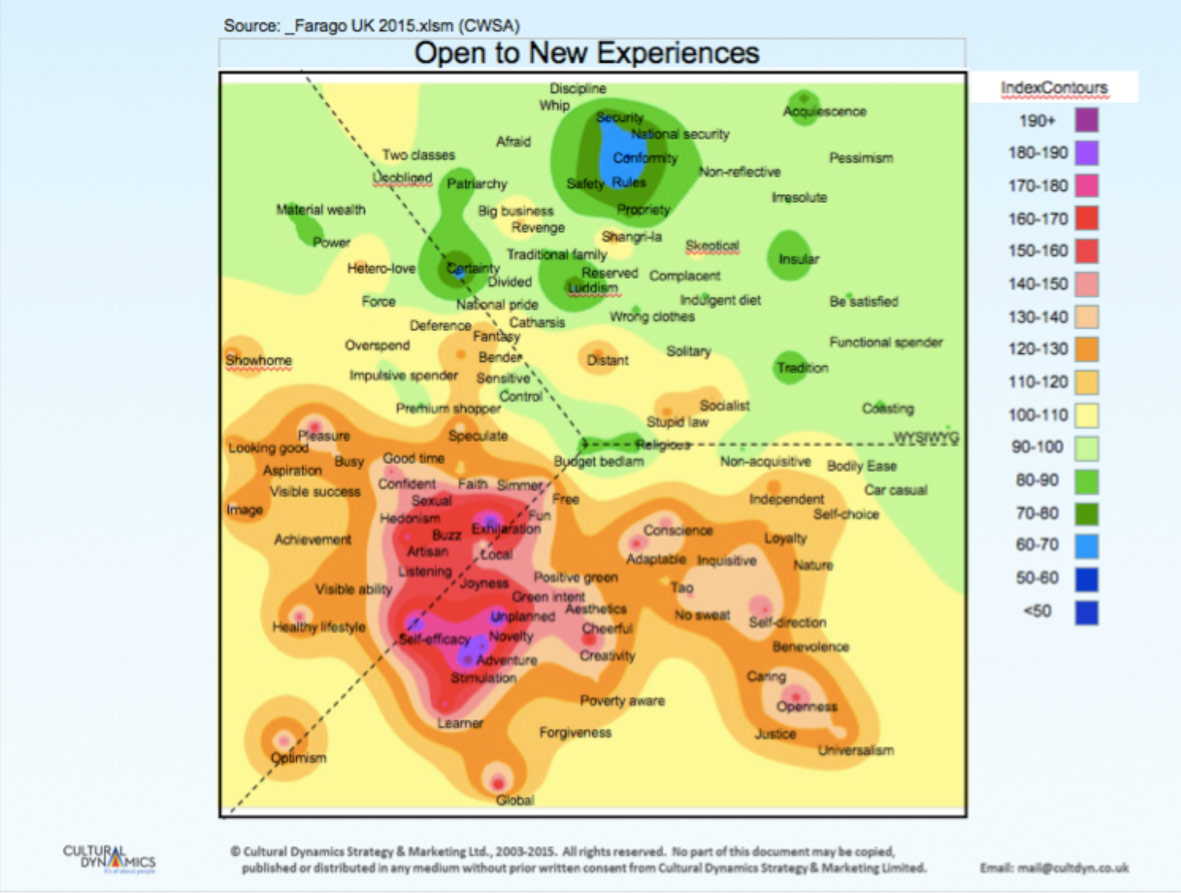
Looking beyond ‘Millennials’ as a target sector
In this article we take a look at the new Haagen Daz brand direction, in the context of the original ‘values’ based launch strategy – and deeper understanding of what drives ‘Millenial’ behaviour. (click link below to reference the original article)
The original launch strategy was supported by ‘values’ based insight
The ‘original’ advertising that broke new ground in the 90’s positioned Haagen Dazs as more than simply a female focused brand. It also included men who would be buying ice cream – not something that men were normally seen doing in the 90’s.
The campaign also had to break new ground. It had to be totally different from other existing ice cream brands, due to their size of budget and reach in comparison to more established brands and their distribution networks.
The values of the target market – a non-traditional market segment that typically didn’t include ice cream in their repertoire of foods (or luxuries) – was chosen as they were viewed as ‘most likely to be open to new experiences’, inherent in very specific values type. At the time ‘healthy eating’ was an emerging phenomenon in the food sector, and not very different from the ‘clean eating’ much trumpeted today. Haagen Dazs confronted this through strategies that provided alternative, and more powerful, benefits to the consumer.
The highly successful launch has been changed in some ways from that time of experimentation and sensuality and is changing again in the coming months – theoretically to increase appeal to ‘millennials’.
‘Millenials’ is too shallow an analysis of the target audience
Marketers need to look beyond the ‘millennials’ as a market sector, or target market, and begin to apply insights from values research in order to create better, more targeted campaigns. Just as the disruptive positioning of a brand within a mature market sector back in the 90’s was based on values so to must a new form of disruption occur in the mature market sector in the teens.
To be sure the challenges are different – not only a dominant position Haagen Dazs now occupies, rather the small guerrilla brand it was back then – but also the more highly competitive brand environment filled the multiple platforms in many different channels for branding and brand experiences.
What hasn’t changed however is the basic psychology and mind set – the values system – of human beings. The people we are before we become ‘customers’, ‘users’, ‘clients’, ‘guests’ or other similar descriptions that mask the humanity of real people and real hopes, dreams, fears and desires. Understanding targets or market sectors in this way is the key to successful and sustainable marketing, branding and authentic communications.
The coming campaign for Haagen Dazs “Everyday Made Extraordinary” sounds not unreasonable as a positioning/campaign idea. The acceptance of the line is likely to have been extensively tested among its 18-34 target market. This is the demographic which today is given the name Millennials, and in former times the same demographic was called “Boomers”, Gen X, Gen Y, or any other catchy title that suited lazy marketers. Each in their time was more healthy in their approach to food, more likely to change their habits quickly, more likely to value experience over material ‘things’, etc – all facts that support that the Millennials are different.
They are different in the same way 18-34 are always different from their older counterparts – this isn’t a ‘whole new ball game’ it is just a different cohort passing through the age group.
Understanding this basic insight allows marketers to vastly expand their knowledge base and know what they can use that ‘always work’ and where there are unique new opportunities that exist because technological change that has fundamentally changed channels and platforms of communications and experience.
In the 90’s this iconic brand was NOT iconic, in fact before the BBH campaigns it was largely unknown to the grocery shopping females who bought ice cream for their families. The challenge was to use the relatively small number of media channels available to branding agencies at the time, as there were little to no distribution points in grocery chains – there was also a distinct lack of point of sale opportunities – something that its larger competitors used effectively.
Millenials include Settlers, Prospectors and Pioneers
But by targeting the Pioneers within the 18-34 age group of the time they were able to isolate those among the cohort who were most open to new experience, who had the ‘consumer confidence’ to pay 2 and 3 times the price for a product they hadn’t been conditioned to include in their ‘healthy diets’, and more importantly for the long term success of the brand – stake a place in the mind space of the Pioneers that correlated sensuality (fun sexuality) with ice-cream – all on budget 1/10 of the size of the market sector leader.
Short term viable options existed in targeting the Prospectors at that time – the were rejected when the account team at BBH understood that the Prospectors were more likely to be attracted to the brand AFTER the Pioneers made the brand sexy. The Prospectors are natural follows of fashion, not fashion setters – and fashion has always been a driver of behaviour in this age cohort.
The Settlers within the cohort will never be a solid target for disruptive brands or products. In the 1990’s this was not given the time of day in thinking through options and strategies. Maybe they could be considered in this century when Haagen Dazs is an established brand – not a challenger brand?
Questions begetting more questions – the world of the brand marketer!
To finish off here are a couple CDSM Attribute Maps highlighting attributes of values systems of a) Millennials and b) all people high open to new experiences. Can Haagen Dazs, or one of its competitors use this type of insight to create stronger branding in one or more of the channels and platforms that didn’t exist in the 1990’s?

This maps show where Millennials score higher than average on one of 108 Attributes (in reddish colours), lower than average (greens and blues) and where they are average (yellow). Healthy Lifestyle, Visible Success, Hedonism, Buzz are all more important to this age group than it is to others. Interestingly a flexible enjoyment of sex is more important to 25-34’s than it is to 18-24’s!

A values set that prizes new experiences is always over represented in the Millennial age group than it is in other age groups – just as it was when the Boomers were this age, and Gen X was this age, etc. More importantly for brand architects, this mind set both wider in terms of appeal other age groups (the Millennials are only 44% of this mind set) and more complex in terms of correlating with other strong predictors of behaviour change – Self Efficacy, Optimism and Learner.
